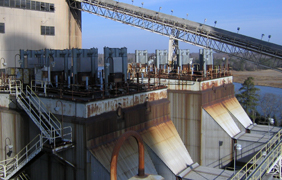Rapping is an essential component of the collection and removal processes and an integral part of precipitator performance. Ineffective rapping can lead to build-up, re-entrainment, and reduced power levels. Periodically checking your rappers to ensure proper connections and functioning can help support consistent precipitator performance. Below are some helpful tips to ensure the continued proper operation of your equipment.
How can I check the operation of my EMR2 rappers?
- Check your lift height. This will be the primary indicator if the rapper needs to be replaced. See our video on how to check lift height.
- Make sure it’s properly seated on the shaft. The rapper shaft needs to seat up against the strike plate in the mounting of the rapper to assure transfer of rapping energy.
- Check for corrosion on the housing and around the junction box. Water in-leakage will corrode the internals and cause coil failures.
- Check for missing or loose bolts at the flange. Replace or tighten as necessary.
- Check electrical connections in the junction box.


